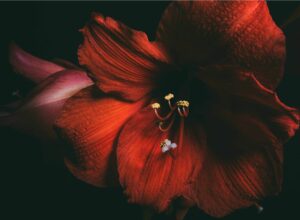HelloMD’s co-founder Pamela Hadfield gave a talk about cannabis and wellness at the Wine & Weed Symposium, held in San Luis Obispo, CA this past month. Ever since “60 Minutes” reported on it back in 1991, the wine industry has long touted the health benefits of drinking wine in moderation—in that red wine in particular appears to help lower the incidence of heart disease.
We can draw parallels between drinking wine for heart health and consuming cannabis for overall wellness. This is because marijuana has also been shown to support folks’ health and well-being. After more than two decades of medical marijuana legalization in California, adult-use cannabis is now upon us—and with it an influx of individuals who are neither purely recreational, nor purely medical.
FOLLOW US ON FACEBOOK & INSTAGRAM
In her nearly hour-long session, Pamela spoke to the perceptions versus reality of today’s cannabis consumers. She touched on her own once-held misconceptions, and how her personal and positive experiences with cannabis changed her mind. Pamela also touched on the sea change taking place across the societal and political landscapes, and then walked through a few cannabis basics—from cannabinoids like cannabidiol (CBD) and tetrahydrocannabinol (THC) to why doctors still don’t know much about the plant.
Take a look at a few excerpts from Pamela’s talk. And come see her speak on the latest trends in cannabis at the next Wine & Weed Symposium, scheduled for Aug. 2, in Santa Rosa.
Stigmas & Stereotypes: Pamela’s Own Journey
I had a very outdated view and stigma towards who the cannabis consumer was. I had never really had a positive experience with cannabis. I had often, if I tried it, ended up paranoid and anxious. … But like so many people who end up trying cannabis medicinally, it was my medication of last resort, and it should have been my medication of first resort.
I went and got my medical recommendation, tried [cannabis], and within the first month, I was managing my [migraine] pain effectively. [Cannabis] helped me get off of Vicodin completely within about two months. And in six months, I was preventing my migraines altogether. And I can say that for the last four years, I have not had a migraine after 25 years [of suffering from them]. So, I became a much happier person. Health is wealth really when you think about it.
RELATED: MICRODOSING CANNABIS STOPPED MY CHRONIC PAIN
The Largest Group Embracing Cannabis Is the Health & Wellness Consumer
In terms of our research, what we found is that that the stoner [stereotype]—that truly recreational consumer—will be about 10–13% of the market and hold steady. Now you might say, well that seems a little bit crazy, right? [What about] that stoner image; there’s so many of them. But what we’ve found is that people tend to cycle into that often between the ages of 18–25.
The largest chunk of people moving into cannabis today are what we call the health and wellness cannabis consumer. So … you might see people that had migraines like myself who weren’t so into cannabis. It’s solved that compromised health issue, and then they say, "Well, you know what? It also makes me feel good on a Friday night if I do it appropriately."
And then you might find somebody who’s a lifestyle consumer who might be a male, 36–38 years old, who starts to pick up a joint on a Friday night again and enjoys it, but then says, “Hey, that really helps with my insomnia.”
So, what I’m trying to say here is that this black-and-white look at cannabis as being recreational versus medicinal is a little too rigid. [The reality is that it’s] actually a very fluid spectrum. And as you move through your life, your needs, your wants and your desires change, and cannabis tends to move in and out of both.
Marijuana Is Going Mainstream
So … what’s changing in terms of mainstream acceptance? One of the things that I find very interesting is when somebody says to me in a particular county in California, they’ll say, “We don’t want cannabis here. We don’t want to legalize it, because we don’t want it here.”
I have news for them. It’s already been there. It’s just that it’s been under the covers. In 2016, 54 billion dollars of cannabis was sold in the United States, of which 6 billion dollars was legal. If you don’t think cannabis has been in and around us this entire time, then you really haven’t been looking.
What we’re seeing right now is a global phenomenon of cultural norms that are changing, cultural views that are changing. This is something that can’t be stopped, and one of the reasons it can’t be stopped is that people are now feeling like, “I have been using cannabis, and I can be out with it.”
Or they’re seeing an alternative to get them out of a problem, and as humans we’re very much geared towards problem-solution, just like with my migraines: problem and then solution.
And so, what we see at HelloMD on a daily basis is that cannabis is often a solution for people. It may not be the primary solution. Somebody might say to us, “I’m in chronic pain, and I need to solve my pain issue.” Well, it may not be the silver bullet, but often [cannabis] can solve anxiety. It can solve problems with insomnia; it can solve problems with depression. All those things can be in that health and wellness category.
RELATED: CANNABIS FOR OPTIMAL WELLNESS
Cannabis Can Solve the Opioid Crisis
In legal medical marijuana states, opioid prescription rates dropped by 22%. This research has been out for the last year or so, maybe a little bit longer. But it’s coming out more and more that in medically legal states—and it has to be emphasized, where cannabis is very accessible—the prescription rates will drop. In addition, what we’re seeing is that general practitioners on average will prescribe 1,800 fewer doses of opioids per practice per year in medically legal states.
As we know, the opioid epidemic is at an all-time high. It’s absolutely phenomenal how it has devastated society. Medical cannabis, and cannabis in general, is a solution to the opioid crisis.
I think it was this past week … did anyone see Sanjay Gupta’s new documentary “Weed”? He actually came out in his new documentary series—which was a real tipping point in and of itself for the industry—to say that the opioid crisis can be solved by cannabis. That’s a huge deal.
When It Comes to Cannabis, We the People Are Driving a Sea Change in Politics
Sixty-four percent of Americans support recreational legalization, and 93% support medical legalization. Those are huge numbers. Politicians are starting to listen. We need to continue to talk about this more and more, but I think what we’re seeing right now is a sea change within the political environment because of these numbers.
It’s huge what’s going on right now, because if you’re in the cannabis industry, it gives you hope that we’re no longer going to be demonized … and that we could really come out into the light like any other normal business like the wine industry.
The politicians are getting on board. Chuck Schumer came out for decriminalization. We have John Boehner who joined the board of … one of the largest cannabis companies in the nation and said that his views have evolved. And then Cynthia Nixon who’s running for the governor’s seat in New York state. Gov. Cuomo has been dead set against legalization, and all of a sudden he’s evolved as well.
My own personal view, and I think other people might say this as well, is that a large part of this might have to do with the midterm elections that are coming up and the percentage of people that actually support cannabis legalization.
Cannabis Product Innovations Have Blown Past Smoking
I think one of the biggest misunderstandings about cannabis today is that you have to be smoking a joint or that you’re smoking a bong. And the reality is that that’s not the case. So, can I consume cannabis without smoking? Absolutely. So, the flower has been one of the most popular ways to consume cannabis. Meaning you’d go to the dispensary and you buy bud.
Everyone thinks about cannabis and smoking, smoking from a bowl or a joint or whatever, because that has been sort of the standard. But the industry has moved on so quickly. One of the reasons why people look to California so intensely is because of the product innovation that’s happening here.
I was talking to one of the Canadian licensed producers, and he said, “You know, I’m not really interested in California grows. You’ve talked about 20,000 square foot grows. We have million square foot grows. But what we’re interested in is how you have developed whole new categories of product types.”
Basically, due to our unregulated markets, we have pushed innovation in the cannabis industry. We’ve pushed that envelope. And so, as a result, you can take all different kinds of product types, and many of them are not about smoking.
So that means you can take a gel cap; you can have a topical that’s non-psychoactive on your skin. You can vape, which is not considered smoking. You can take an edible. Everyone knows the chocolate brownie that’s wrapped in plastic wrap of their youth. It exists, but what you find today are beautifully branded products and all different kinds of edibles. It could be a gummy; it could be a chocolate; it could be a stick of gum.
Mixing THC & Wine—It’s Not for Everyone
So, can I drink and consume cannabis? When people ask me this—and I get asked this all the time, I think it’s really highly dependent on who you are as a person. The thing that everyone needs to know about smoking, or about consuming cannabis and drinking—whether that’s wine or hard alcohol—is that hard alcohol or alcohol in general magnifies the level of THC in your bloodstream.
So, if you’re good with getting high and having that magnified, then that might be appropriate for you. For me, if I drink alcohol and I have a little bit of THC, I’m [flat] on the ground. So, I think it really depends. But as many of our panelists have said, the regulations today don’t allow those things to go together.
If you’re new to cannabis and want to learn more, take a look at our Cannabis 101 post. HelloMD can help you get your medical marijuana recommendation; it’s easy, private and 100% online.





